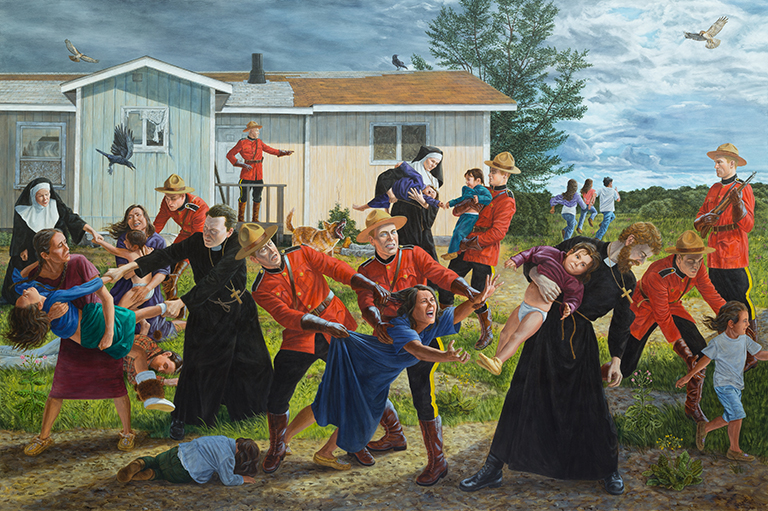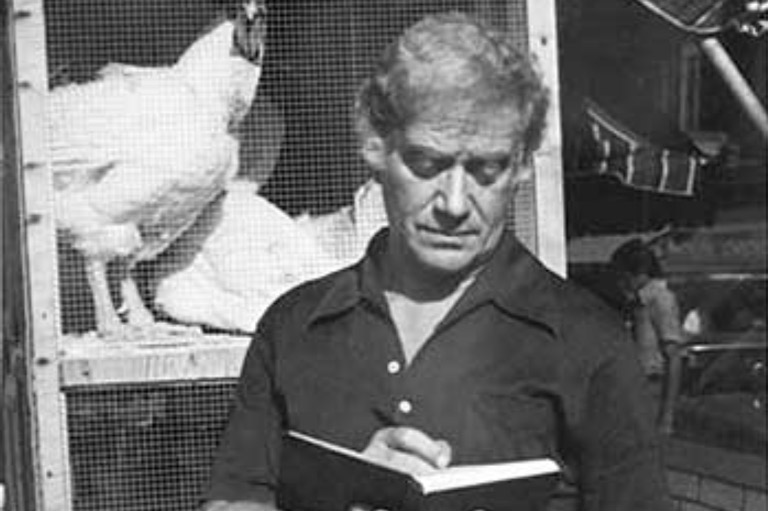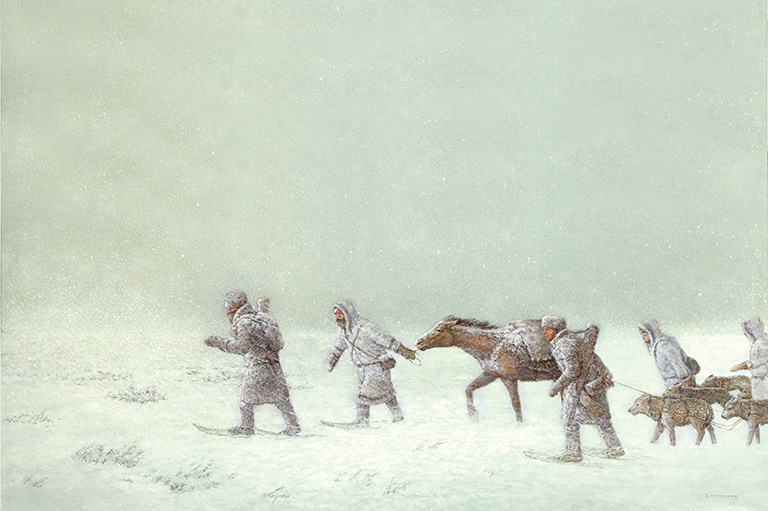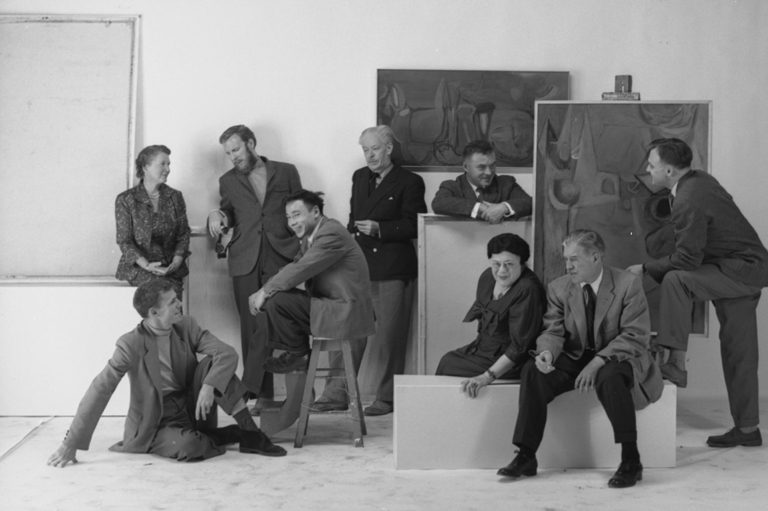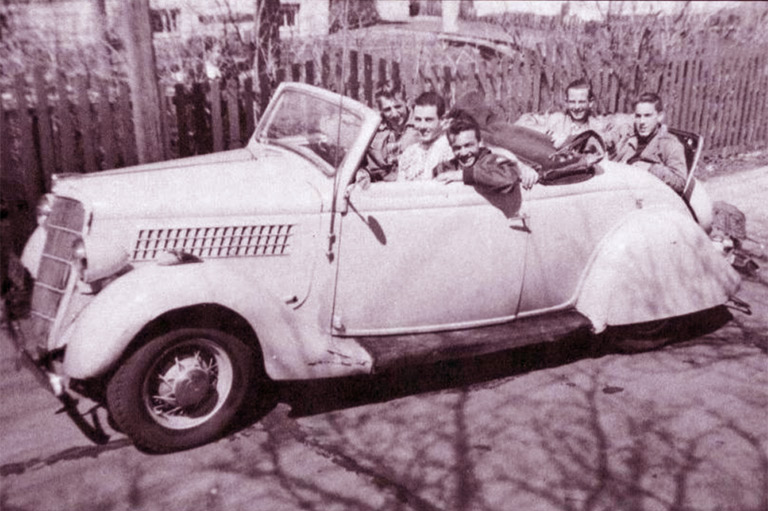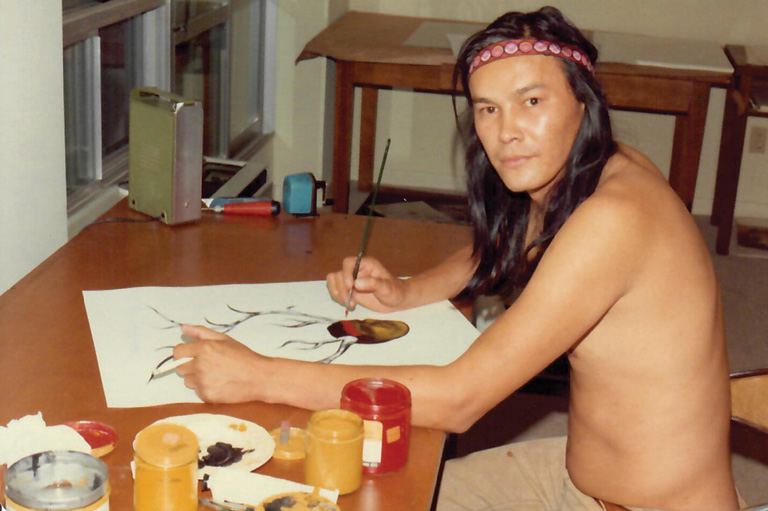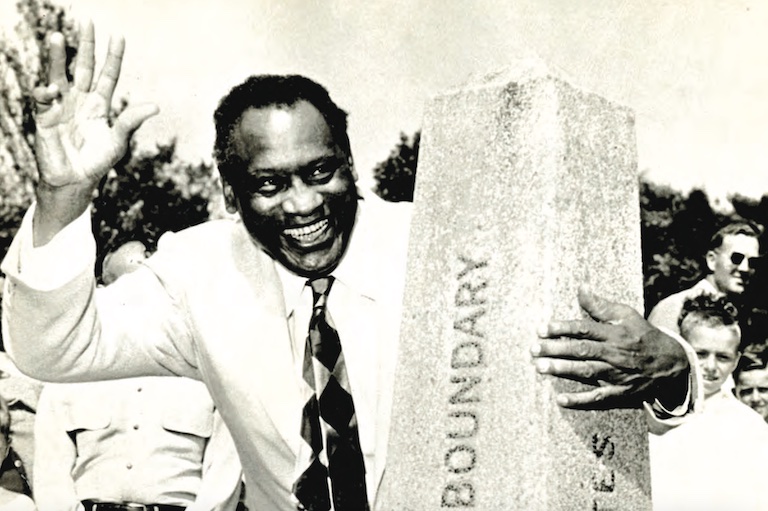Lost Art of Fitz Roy Dixon
The newly discovered paintings by Francis Fitz Roy Dixon (1856–1914) number more than seventy. They have never been exhibited and have been stored away, literally out of the light of day, for the past century or so.
While Dixon’s work is not totally unknown, so little of it is in the public domain that scholars and collectors have paid it scant attention.
Article continues below...
-
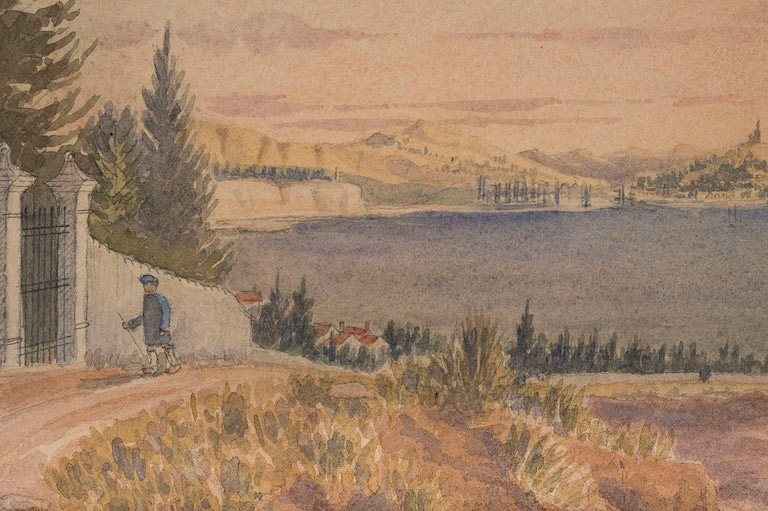 "View of Marseilles." During a two-month stop in and around Marseilles, France, Francis Fitz Roy Dixon painted French life and the countryside.Courtesy of Jon Dellandrea
"View of Marseilles." During a two-month stop in and around Marseilles, France, Francis Fitz Roy Dixon painted French life and the countryside.Courtesy of Jon Dellandrea -
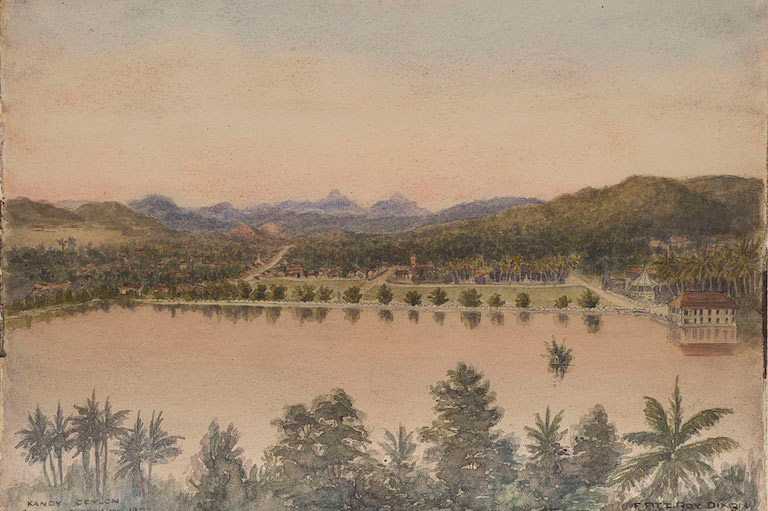 "Kandy Ceylon." Francis Fitz Roy Dixon painted this around 1900 from a sketch he did in the late 1870s.Courtesy of Jon Dellandrea
"Kandy Ceylon." Francis Fitz Roy Dixon painted this around 1900 from a sketch he did in the late 1870s.Courtesy of Jon Dellandrea -
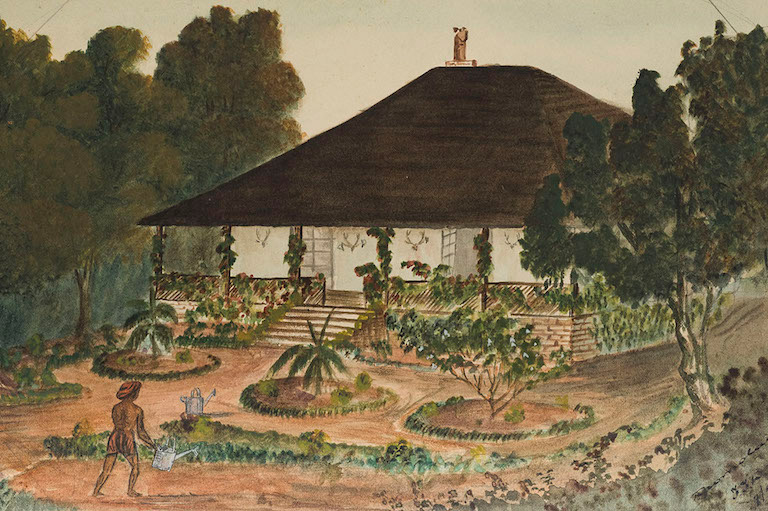 "The Bungalow," circa 1875. An early painting of Francis Fitz Roy Dixon's family home on a planation in Ceylon.Courtesy of Jon Dellandrea
"The Bungalow," circa 1875. An early painting of Francis Fitz Roy Dixon's family home on a planation in Ceylon.Courtesy of Jon Dellandrea -
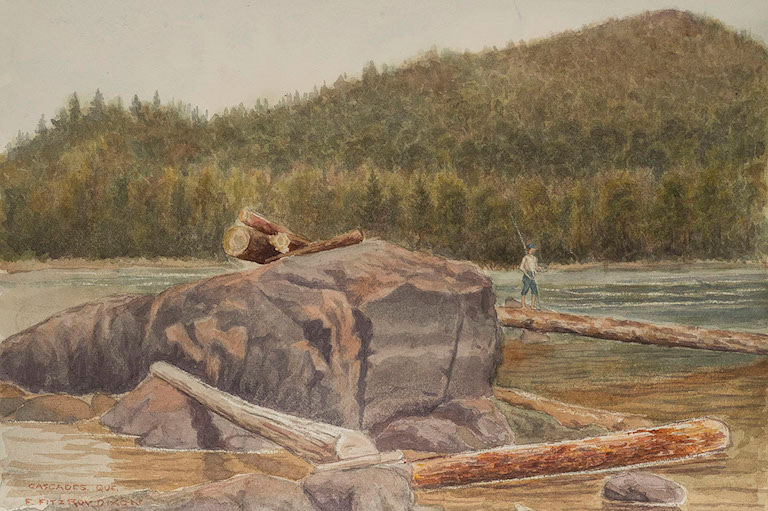 "Cascades Quebec," circa 1900. The boy on the log is likely artist Francis Fitz Roy Dixon's son, NormandCourtesy of Jon Dellandrea
"Cascades Quebec," circa 1900. The boy on the log is likely artist Francis Fitz Roy Dixon's son, NormandCourtesy of Jon Dellandrea -
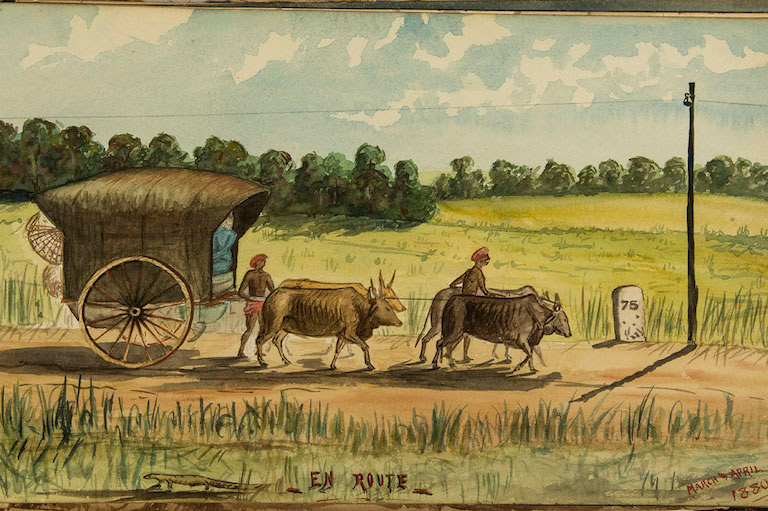 "En Route March & April 1880." This painting by Francis Fitz Roy Dixon is of the oxcart which transported the Dixon family to the coast of Ceylon for their journey to North America via EuropeCourtesy of Jon Dellandrea
"En Route March & April 1880." This painting by Francis Fitz Roy Dixon is of the oxcart which transported the Dixon family to the coast of Ceylon for their journey to North America via EuropeCourtesy of Jon Dellandrea -
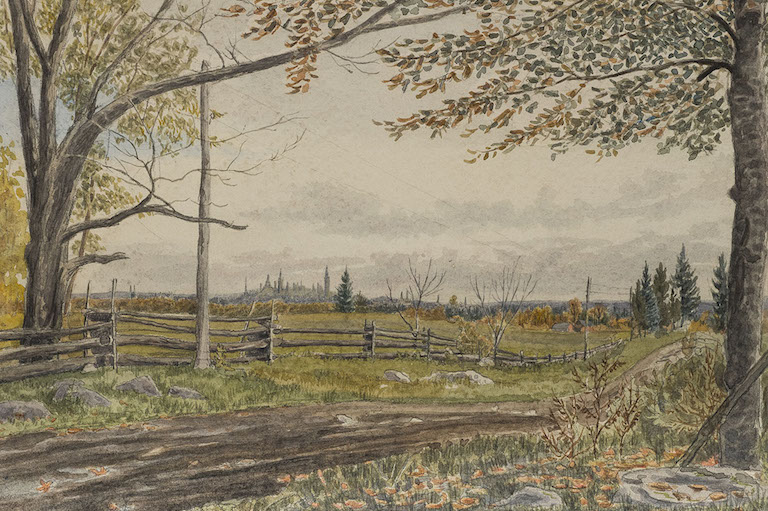 A view of the Quebec countryside with the Parliament buildings in the distance, circa 1900, by Francis Fitz Roy Dixon.Courtesy of Jon Dellandrea
A view of the Quebec countryside with the Parliament buildings in the distance, circa 1900, by Francis Fitz Roy Dixon.Courtesy of Jon Dellandrea -
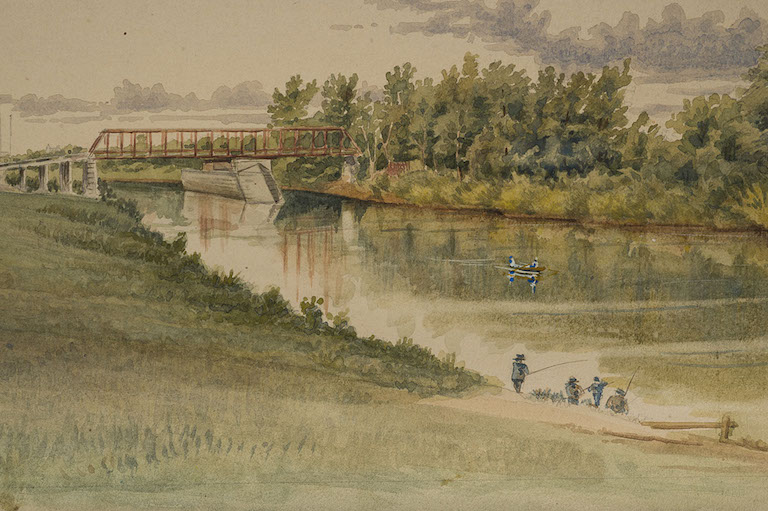 Fishermen on the Assiniboine River near Winnipeg, circa 1895, by Francis Fitz Roy Dixon.Courtesy of Jon Dellandrea
Fishermen on the Assiniboine River near Winnipeg, circa 1895, by Francis Fitz Roy Dixon.Courtesy of Jon Dellandrea -
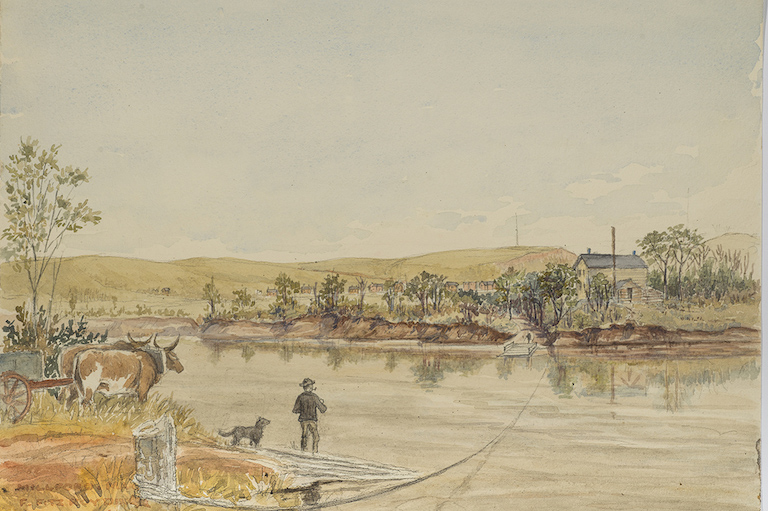 An important 1881 painting by Francis Fitz Roy Dixon of the "ford" on the Assiniboine River near Millford, Manitoba (now a ghost town).Courtesy of Jon Dellandrea
An important 1881 painting by Francis Fitz Roy Dixon of the "ford" on the Assiniboine River near Millford, Manitoba (now a ghost town).Courtesy of Jon Dellandrea -
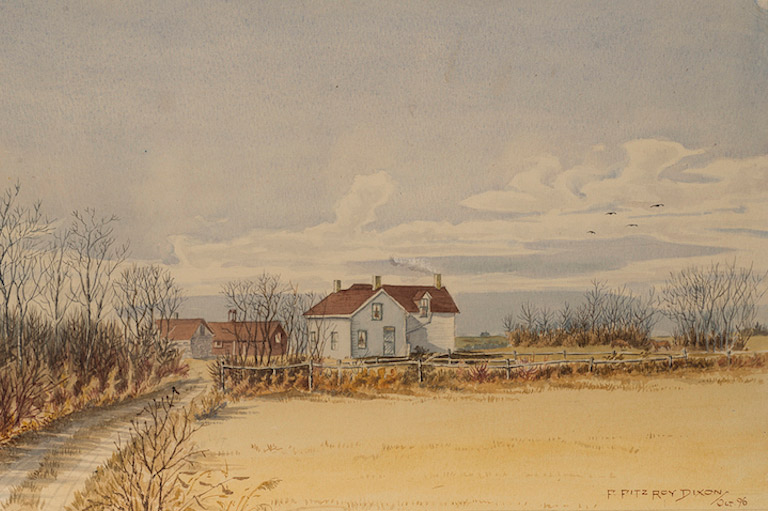 "La Normandie" October, 1896. Francis Fitz Roy Dixon painted this view of his home, circa 1896.Courtesy of Jon Dellandrea
"La Normandie" October, 1896. Francis Fitz Roy Dixon painted this view of his home, circa 1896.Courtesy of Jon Dellandrea -
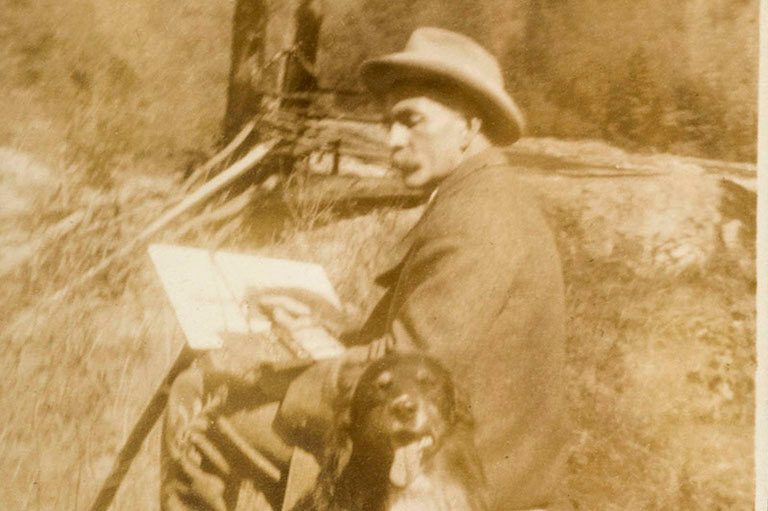 Francis Fitz Roy Dixon at work sketching with his dog at Cascades, Quebec, circa 1911.Courtesy of Jon Dellandrea
Francis Fitz Roy Dixon at work sketching with his dog at Cascades, Quebec, circa 1911.Courtesy of Jon Dellandrea
Fifteen or so of Dixon’s paintings can be found in the collections of the Royal Ontario Museum, the Library and Archives of Canada, the Manitoba Provincial Archives, the Winnipeg Art Gallery and a private collection or two.
There are records of a small number of works being offered for public sale over the years and there has been one public presentation of note of Dixon’s work. In April 1973, Fitz Roy’s grandson, Leo Hay Murphy of Ottawa, presented a talk on the subject to the Gatineau Valley Historical Society. He illustrated his talk with “a number of paintings never seen in public.”
As a result of the Internet offering and through subsequent fortuitous circumstances, and contact with descendants in three countries, Dixon’s art, sketch books and related archival materials have come to light and research is underway for a book on Dixon’s remarkable life and art.
Born in Batticaloa, Ceylon, in July 1856, Dixon was the son of Charles Dixon a “landed proprietor” and Emily Sarah Gray. His father, Charles Dixon died when Francis was only five.
His grandfather Colonel Charles George Dixon, the founder of the town of Beawar in India, was an officer in the British Colonial Administration who died during the “Indian Uprising of 1857” when Francis was a baby.
It is likely that Dixon’s childhood memories included family stories of the tragic events of 1857 in India and the death of his grandfather.
Trained as a painter and an engineer in England in the late 1860s, Dixon returned to Ceylon and began his artistic career in Ceylon in the early 1870s. He painted the landscape of Ceylon as he saw it with particular attention to the interplay of people and place.
In 1880 Dixon, his wife Sophie and their baby daughter Marguerite left Ceylon and journeyed through the Suez Canal. After a two month stop in the south of France at L’Estaque near Marseilles where he painted extensively, the Dixon family made the journey to North America and ultimately to Manitoba.
The Dixon’s first home in North America was built near Millford, Manitoba, (now a ghost town) in 1881. His images of the area may convey a sense of peaceful pioneer life, but the events of the time in the area were far from peaceful. In September of 1884 he was appointed a justice of the peace for Manitoba. A year later, the North West Rebellion broke out. Dixon was therefore more than a casual observer of the upheaval of the times.
Curiously, F. Fitz Roy Dixon, having been born during the time of one uprising in India, found himself less than thirty years later on the fringe of another in North America. Big Bear, the powerful Cree chief, had signed Treaty 6 in 1882, but by 1885 the Frog Lake area which he occupied was in turmoil. The history of this period has been well-documented by eye-witnesses, participants and subsequent historians.
By all accounts it was a troubling time of broken promises, violated treaties, starving First Nations people and a resulting bubbling cauldron of discontent. At the depth of this discontent was a contentious struggle over land and land dealings.
The 29-year-old Dixon, whose family experiences and tragedies had been shaped by remarkably similar forces in colonial India, found himself on the edge of a festering conflict which was tearing apart his new homeland.
The years following the period of the rebellion for Dixon were filled with travel across the country as his position with the Department of Dominion Lands required him to inspect the Dominion Lands Offices in their various locations.
He painted the landscapes as he saw them from Manitoba and the North West Territories, to Ontario and the Gatineau hills and rivers of Quebec.
In the late 1890s when the Dominion Lands Office in Winnipeg relocated to Ottawa, Dixon and his wife and family moved to Ottawa where his professional life and his painting career flourished.
We hope you’ll help us continue to share fascinating stories about Canada’s past by making a donation to Canada’s History Society today.
We highlight our nation’s diverse past by telling stories that illuminate the people, places, and events that unite us as Canadians, and by making those stories accessible to everyone through our free online content.
We are a registered charity that depends on contributions from readers like you to share inspiring and informative stories with students and citizens of all ages — award-winning stories written by Canada’s top historians, authors, journalists, and history enthusiasts.
Any amount helps, or better yet, start a monthly donation today. Your support makes all the difference. Thank you!
Themes associated with this article
Advertisement
You might also like...

Canada’s History Archive, featuring The Beaver, is now available for your browsing and searching pleasure!
With 7 uniquely curated newsletters to choose from, we have something for everyone.

